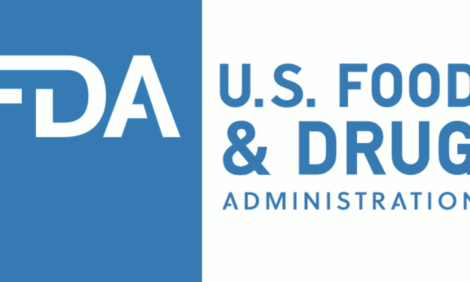



International Egg and Poultry Review
By the USDA's Agricultural Marketing Service - This is a weekly report looking at international developments concerning the poultry industry, this week looking at the Central America Free Trade Agreement.
CAFTA-DR
In January of 2002, the Bush Administration announced plans to form a
free trade agreement (FTA) with Central American countries and plans
for a future trade agreement amongst all the countries in the Americas
(FTAA.) The agreement would economically unify the continent making it
a powerful trade force in the international market. Negotiations took
place between the U.S., Costa Rica, El Salvador, Guatemala, Honduras,
and Nicaragua in 2003. Agreements were reached in January of
2004 with signing of the Central America Free Trade Agreement (CAFTA)
taking place in May 2004.
During 2004, the Dominican Republic (DR) expressed interest in joining
and negotiations between the U.S. and Central American countries
began once again with an agreement being reached and signed on
August 5, 2004. Since then, the CAFTA-DR agreement was ratified in El
Salvador in December 2004 and in Honduras in March of 2005; the
balance of CAFTA-DR countries are still pending legislative approval.
On April 21, 2005 U.S. Trade Representative (USTR) Peter F. Allgeier
outlined CAFTA-DR's potential benefits and encouraged Congress to
approve the agreement. In his testimony to the House Committee on
Ways and Means, Allgeier mentioned strengthening economic ties between
the countries, "leveling the playing field" through reduced tariffs
and the creation of tariff-rate quotas (TRQ,) developing product safeguards
and sanitary and phytosanitary measures, making export subsidy
arrangements, eliminating the unilateral trade preference, increasing
market access to 44 million consumers, developing labor laws and
standards, introducing some ground-breaking environmental laws,
encouraging democracy, as well as many other opportunities.
Collectively, the CAFTA-DR countries would make up the second largest
U.S. export market in Latin America. The export market would be larger
than Brazil or Australia and larger than the combined countries of Russia,
India, and Indonesia. According to estimates provided by the American
Farm Bureau Federation, CAFTA-DR would expand U.S. farm exports
by $1.5 billion a year, doubling our current agricultural exports to
the region. U.S. commodities standing to gain and in some cases regain
from lost market shares due to preferences are as follows: poultry,
pork, beef, dairy products, and various others.
On April 20, 2005 Brazilian President Luiz Inacio Lula da Silva announced
Brazil would be supporting Mercosur, a trade agreement between Argentina,
Uruguay, and Paraguay, instead of supporting the FTAA. This
broader rejection than those made in the past could make passage of
CAFTA-DR less likely. CAFTA-DR was seen as the second step to a
hemisphere-wide trade agreement minus Cuba and FTAA as the third
step.
BEFORE CAFTA-DR
Tariffs will be phased out according to specific schedules on a product
and country specific basis. Phase-outs will be immediate (more than
80 percent of goods,) 5 years, 10 years, 12 years, or 15 years (17-20
years for chicken leg quarters, rice, and certain dairy products.) U.S.
poultry currently faces tariffs as high as 164 percent on both fresh and
frozen products, and the WTO permits between 35 to 250 percent.
From 2002 to 2004, U.S. poultry meat suppliers annually shipped on
average 73,195 metric tons (MT) valued at $51.4 million to all six
countries combined. During this period, chicken leg quarters accounted
for approximately 55 percent (in value terms) of total U.S.
poultry exports to the Dominican Republic and Central America. Also,
non-science based sanitary-phytosanitary (SPS) restrictions coupled
with stringent import requirements further restrict U.S. poultry meat
exports to the CAFTA-DR region.
AFTER CAFTA-DR
Under the agreement, each country will provide immediate duty-free
access on chicken leg quarters through country-specific TRQs that
expand annually as duties are eliminated in 17 to 20 years. Some
tariffs on poultry products such as wings, breast meat, and mechanically
de-boned meat will be reduced more quickly with many being
eliminated within 10 years.
Costa Rica will establish a 330 MT TRQ for chicken leg quarters in
year 1, growing by 10 percent annually. The other CAFTA-DR countries
will establish a total initial regional TRQ of 21,810 MT (with individual
country minimum quota levels.) After year 12, the TRQ quantity will be
no less than 5 percent of regional chicken production. Tariffs on chicken
leg quarters will be eliminated in 17 years in Costa Rica and 18 years
in the other four Central American countries.
The Dominican Republic will establish an initial TRQ for chicken leg
quarters of 550 MT, growing by 10 percent annually. It will also establish
a 440 MT TRQ for mechanically de-boned chicken, growing by 10
percent a year, and eventually be phased out over 10 years; a 3,850
MT TRQ for turkey products will be established, which will be phased
out over 15 years.
In addition to providing market access through TRQs and tariff reductions,
each CAFTA-DR country is working to recognize the U.S. meat
inspection and certification systems in order to facilitate U.S. exports.
U.S. tariffs on imported poultry meat from CAFTA-DR countries are
currently zero due to preferences granted under the Caribbean Basin
Initiative. Under the agreement, the tariff will be set at zero immediately
on poultry and poultry products for all CAFTA-DR countries. In
recent years, the U.S. has not imported any poultry meat from these
countries.
Source: USDA FAS/USDA/USTR/USINFO/Congressional Research
Service/El Salvador Trade/Various News Wires
To view the full report, including tables please click here
Source: USDA's Agricultural Marketing Service - 3rd May 2005








